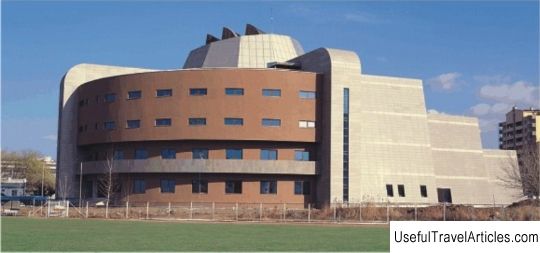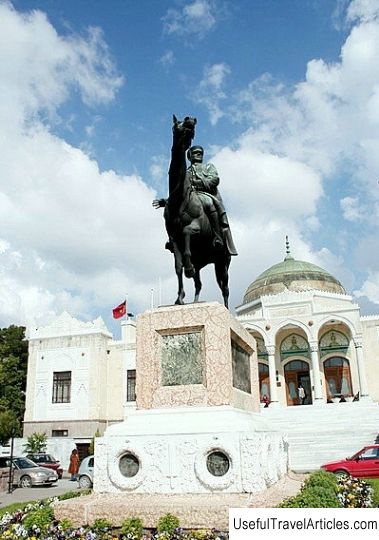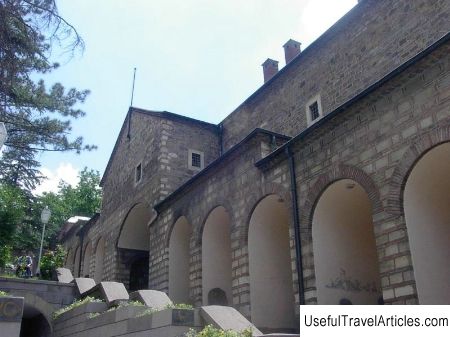Natural history museum description and photos - Turkey: Ankara
Rating: 8,0/10 (123 votes) 
Natural history museum description and photos - Turkey: Ankara. Detailed information about the attraction. Description, photographs and a map showing the nearest significant objects. Title in English - Natural history museum. Photo and descriptionThe Museum of Natural History was created by order of President Ataturk (Mustafa Kemal). On February 7, 1968, the museum opened its doors to visitors. From 2004 until recently, it was closed for restoration. After the renovation works, the complex was opened under the name Ankara Museum of Natural History, which is one of the prominent nature museums in Turkey. It displays natural exhibits that are millions of years old, including precious stones and minerals. The museum has a special section for the visually impaired, in which the exhibits are explained using relief-point type and audio recordings, so blind visitors can walk through the museum without the need for a guide. The museum has a collection of about 10,000 exhibits, in addition, seventy-five thousand units are now in the museum archives at the stage of preparation for the exhibition. The museum is located in the building of the General Directorate of MTA, occupies 4000 square meters and has three floors and five main sections. The first floor is completely devoted to paleontology, where 6400 exhibits are presented. Here is a stuffed dinosaur, bought in America, a dummy of an elephant that lived fifteen million years ago in France, and was donated to the museum by patrons from France. In addition, the installation of the skeleton of the Marash elephant, found in the Gavur Golyu swamp, which lived in these places a thousand years BC, is being carried out. In the same section there are the fossilized remains of a huge stingray, one and a half meters long, which lived 193 million years ago in Ankara - Keserelik. There are also footprints of ancient people who lived in Asia Minor twenty-five thousand years ago, the jaw of a whale that lived in Anatolia and was discovered in Adana-Karatash. In addition, here you can get acquainted with the flora and fauna found in the Kyzyljamam-Gyuvem region. The exhibits presented here were located in this area approximately thirteen to fifteen million years ago. In addition, more than a hundred species of plants and families of insects are offered to the attention of visitors, among which are noted extinct species and those that are endangered. The second floor of the museum is reserved for exhibits that provide information about mineralogy, as well as meet international standards of value. There are about 3300 of them. In this section of the museum there is a moonstone, which was flown by an American astronaut flying to the moon. The stone has another name "Sivas stone". On this floor there are all kinds of stones and varieties of Turkish marble, as well as a meteorite that fell in 1989 on the village of Yildizeli-Sheikh Khalil. On the second floor there is also a section where all types of tools and metals for metalworking are presented, a collection of alloys numbering two hundred samples. There is also an exhibition in the museum that sheds light on the entire research work of the MTA Department, presented means of work, research results, indicative information and other exhibits. The museum is visited by about forty - fifty thousand visitors a year. It publishes books, guides, memos, brochures for the convenience of museum visitors. It hosts conferences, shows slides and documentaries. He takes an active part in education: primary, secondary, higher, provides young people with the rarest information on the history of the nature of our Earth.     We also recommend reading Museum of the novel Two Captains description and photo - Russia - North-West: Pskov Topic: Natural history museum description and photos - Turkey: Ankara. |




